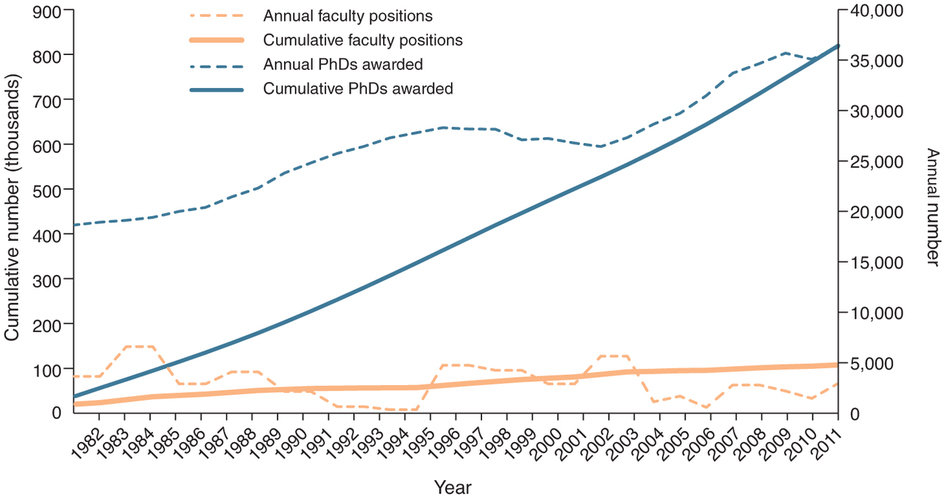5. Few postdocs have realistic prospects of a regular faculty position
The postdoc population, which has grown very rapidly in U.S. universities and is recruited increasingly from abroad, looks more like a pool of low-cost research lab workers with limited career prospects than a high-quality training program for soon-to-be academic researchers. Indeed, if the truth be told---only a very small percentage of those in the current postdoc pool have any realistic prospects of gaining a regular faculty position.
New faculty positions versus new PhDs

Source: Nature Biotechnology 31, 938–941 (2013) doi:10.1038/nbt.2706
"Since 1982, almost 800,000 PhDs were awarded in science and engineering (S&E) fields, whereas only about 100,000 academic faculty positions were created in those fields within the same time frame. The number of S&E PhDs awarded annually has also increased over this time frame, from ~19,000 in 1982 to ~36,000 in 2011. The number of faculty positions created each year, however, has not changed, with roughly 3,000 new positions created annually."